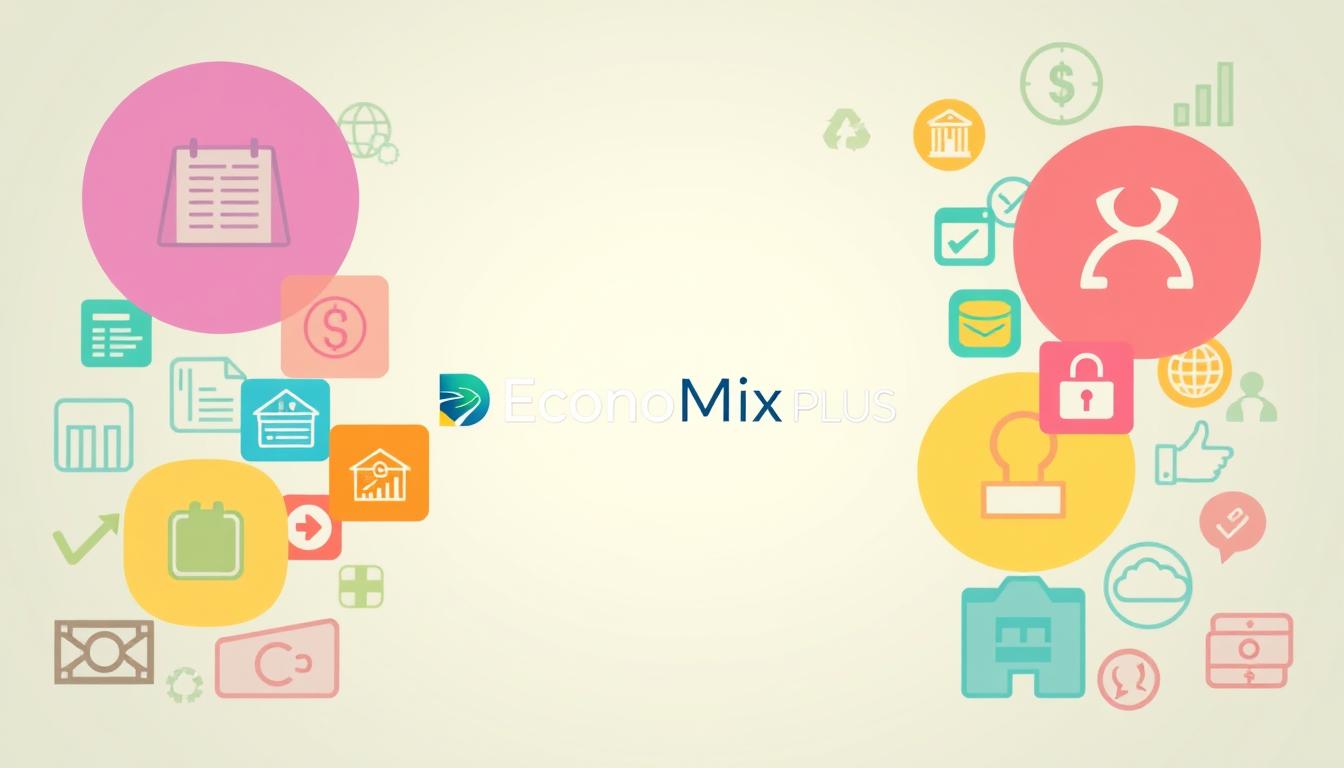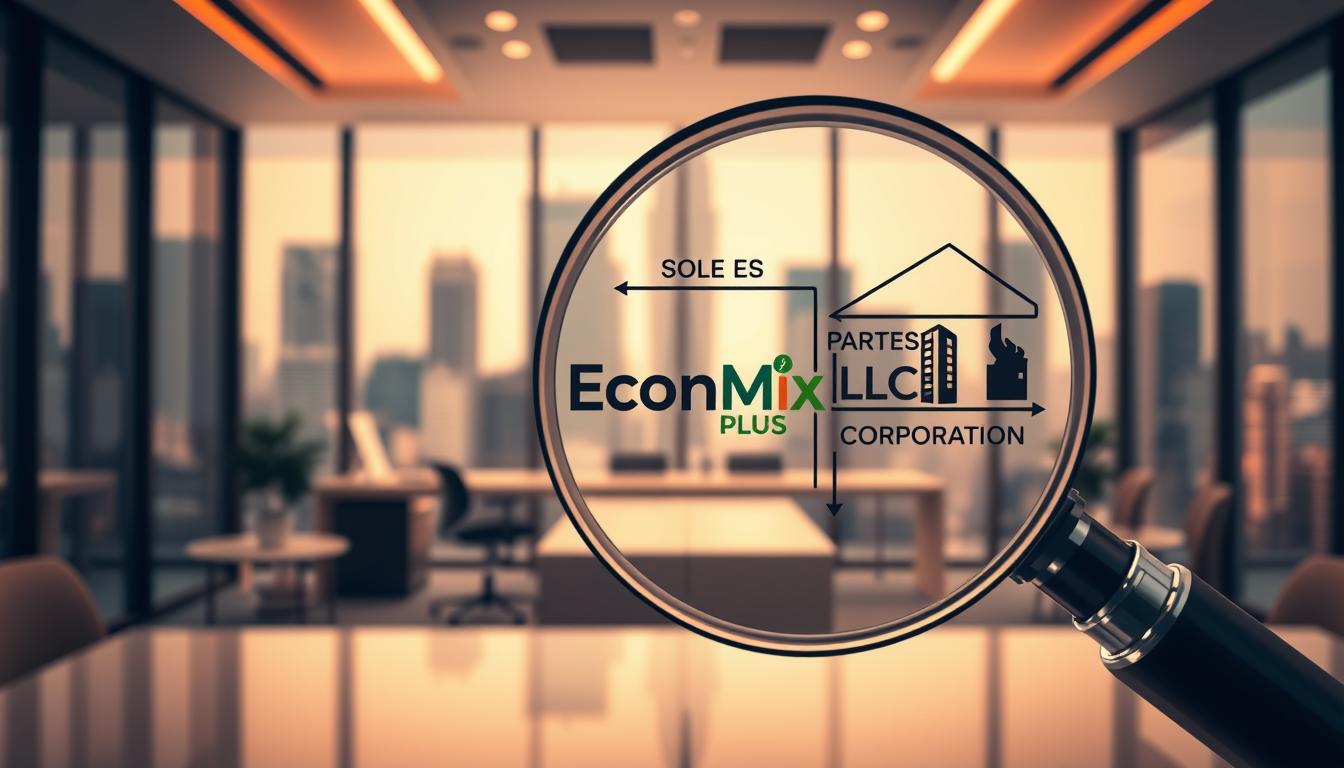Running a company comes with many responsibilities, and financial obligations rank high on the list. Many entrepreneurs wonder why some enterprises thrive while others struggle to stay afloat. Could tax burdens be the hidden factor?
On average, firms pay nearly 20% of their gross income in various levies. Sole proprietorships face lower rates, while corporations often deal with higher costs. These differences highlight the importance of strategic planning from day one.
State regulations and business structures create unique challenges. Payroll deductions and compliance rules further complicate cash flow management. Smart owners explore legal ways to reduce liabilities while staying profitable.
Key Takeaways
- Different business types face varying tax percentages
- Proper planning helps manage financial obligations
- State laws influence overall operational costs
- Legal deductions can improve profit margins
- Payroll systems impact long-term sustainability
Understanding Small Business Taxes
Proper financial management separates thriving ventures from struggling ones. One critical factor? Navigating tax obligations effectively. Business owners who grasp these responsibilities gain a competitive edge. Understanding the intricacies of tax laws not only helps in compliance but also enables entrepreneurs to identify potential savings and deductions that can significantly impact their bottom line. Additionally, effective tax management allows businesses to allocate resources more efficiently, ensuring that they are prepared for both expected and unexpected expenses. By prioritizing financial literacy and seeking professional advice when necessary, owners can turn tax obligations from a daunting challenge into an opportunity for growth and sustainability.
Why Tax Planning Matters
Strategic tax planning ensures stability. Without it, unexpected liabilities can disrupt cash flow. Experts recommend allocating 30% of income for tax payments to avoid shortfalls.
Quarterly estimated payments help manage variable earnings. This approach prevents penalties and smooths budget fluctuations. Proactive planning turns taxes from a burden into a predictable expense.
Average Tax Rates Across Business Types
Federal corporate income tax sits at 21%. However, rates vary by structure:
- LLCs: Pass-through taxation (reported via personal income tax).
- Corporations: Face double taxation (company profits + shareholder dividends).
State differences add complexity. Wyoming imposes no corporate tax, while California’s rate reaches 8.84%. Choosing the right structure impacts how much a company must pay taxes annually.
How Do Taxes Affect Small Businesses?
Financial stability often hinges on understanding operational costs, with tax obligations playing a pivotal role. Companies that fail to plan for these expenses risk cash flow disruptions and reduced profitability.
Cash Flow Challenges
Unexpected tax assessments can strain budgets. A 2023 study showed firms in high-tax states allocate 30% of revenue to cover levies. This leaves less for growth investments or payroll.
Multi-state operations face added hurdles. Each jurisdiction has unique rules for payroll, sales, and property taxes. Compliance errors trigger penalties, further squeezing margins.
Regional Tax Disparities
Eight states—including Texas and Florida—charge no income tax. Others like California combine high rates with strict regulations. The TCJA’s $10k SALT deduction cap intensified this divide.
| State | Corporate Tax Rate | Income Tax |
|---|---|---|
| California | 8.84% | 13.3% |
| Texas | 0% | 0% |
| New York | 6.5% | 8.82% |
| Florida | 5.5% | 0% |
Post-TCJA, many owners relocated to low-tax areas. This shift highlights how state policies directly influence where companies thrive.
Types of Taxes Small Businesses Pay
From payroll to property, levies shape a company’s financial landscape in unexpected ways. Each category carries distinct rules, deadlines, and potential deductions. Smart owners analyze these to optimize cash flow.

Income Tax: Federal and State Obligations
Federal income tax applies to all profits, with rates varying by business structure. Sole proprietors report earnings on personal returns, which means their business income is taxed at their individual income tax rates. This can sometimes lead to higher tax liabilities if their income places them in a higher tax bracket. In contrast, corporations file separately, allowing them to benefit from certain deductions and lower tax rates on retained earnings.
States like Texas impose no income tax, making it an attractive option for business owners looking to maximize their profits. However, others like California levy up to 13.3%, significantly impacting the net income of businesses operating there. This stark difference in state taxation can influence business decisions, as owners weigh the benefits of location against the tax implications.
Self-Employment Tax: Social Security and Medicare
Independent contractors pay a 15.3% rate for social security and Medicare. This covers both employer and employee portions. W-2 workers split this cost with their employers, reducing individual burdens.
Payroll Tax: Employer and Employee Contributions
Payroll taxes fund FICA programs and unemployment insurance. Employers match employee contributions (6.2% for Social Security, 1.45% for Medicare). Quarterly filings (Forms 940/941) ensure compliance.
| Tax Type | Who Pays | Rate/Rule |
|---|---|---|
| Income | Business/owner | 0–37% federal + state |
| Self-Employment | Contractors | 15.3% (SS + Medicare) |
| Payroll | Employer + employee | 7.65% each (FICA) |
| Property | Asset owners | Local assessment |
Property Tax: Real and Tangible Assets
Local governments charge annual fees on owned property, including land, equipment, and inventory. These fees can vary significantly based on the property’s location and assessed value, which means that business owners should be aware of their local tax regulations to avoid unexpected costs.
Additionally, some states offer depreciation breaks for machinery upgrades, which can provide significant tax relief by allowing businesses to deduct the cost of new equipment over time. This not only incentivizes investments in more efficient machinery but also helps businesses manage their cash flow better by reducing their taxable income.
Excise Tax: Industry-Specific Levies
Certain sectors face extra fees, like fuel for trucking or tanning services. These hidden costs often require specialized accounting to track and deduct.
Pro tip: Home office deductions can offset income taxes. The simplified method allows $5 per square foot (up to 300 sq ft).
How Business Structure Affects Taxes
Choosing the right legal structure impacts a company’s bottom line more than many owners realize. Tax liabilities vary significantly between entity types, from pass-through designs to layered corporate systems. Smart selections can unlock deductions or streamline compliance.

Sole Proprietorships: Pass-Through Taxation
Sole proprietorships report earnings on the owner’s personal tax return. This avoids double taxation but subjects all profits to self-employment levies. The 20% Qualified Business Income (QBI) deduction helps offset some burdens.
Partnerships: Shared Income Reporting
Like sole proprietorships, partnerships pass income to members’ individual returns. Multi-owner ventures file Form 1065 but pay no entity-level tax. Partners split profits based on ownership percentages.
LLCs: Flexibility and State Rules
LLCs default to pass-through treatment but can elect corporate taxation. Single-member versions file as sole props, while multi-member ones mimic partnerships. Some states impose annual franchise fees.
Corporations: C-Corp vs. S-Corp Differences
Corporations face a flat 21% federal rate, plus shareholder dividend taxes. S-corps avoid double taxation by passing income to owners. Conversion from LLCs requires payroll setup but may reduce self-employment taxes.
- C-corps risk double taxation if retaining earnings.
- Service businesses often benefit from S-corp status.
- State franchise taxes apply in California and Delaware.
Tax Deductions and Credits for Small Businesses
Strategic use of tax benefits keeps more money in a company’s pocket each year. Leveraging write-offs and incentives requires knowing which expenses qualify and how to document them properly.

Common Deductible Business Expenses
Ordinary costs like office supplies, travel, and marketing often qualify as deductions. Meals are 50% deductible if business-related, but entertainment expenses face strict limits post-2017.
Detailed records—receipts, logs, or digital trails—are essential. The IRS may disallow claims lacking proof of purpose and amount.
Home Office and Depreciation Deductions
Remote workers can claim $5 per square foot (up to 300 sq ft) for home offices. Section 179 allows immediate expensing of equipment like computers, up to $1 million annually.
Modified Accelerated Cost Recovery System (MACRS) spreads asset costs over 3–20 years. The TCJA expanded bonus depreciation to 100% for qualified purchases.
Key Tax Credits: Work Opportunity, Healthcare
The Work Opportunity Tax Credit (WOTC) offers $2,400–$9,600 per eligible hire, including veterans or SNAP recipients. Healthcare credits assist firms with fewer than 25 full-time staff paying average wages below $56,000.
| Credit | Eligibility | Max Benefit |
|---|---|---|
| WOTC | Targeted employee groups | $9,600/hire |
| Healthcare | 50% of premiums | |
| R&D | Innovation-driven firms | 20% of qualified costs |
Tech startups often overlook R&D credits for prototyping or software development. These incentives reduce tax liabilities dollar-for-dollar, unlike deductions lowering taxable income.
State-Specific Tax Considerations
State tax policies create vastly different financial landscapes for companies. While some regions attract firms with low levies, others impose complex rules that strain budgets. For instance, states with lower tax rates often implement fewer regulations, making it easier for businesses to operate and grow.
Conversely, regions with higher taxes may offer incentives or services that can offset some of the financial burdens. Understanding these variations helps owners make informed location decisions, as they must consider not only the tax rates but also the overall business environment, including workforce availability, infrastructure, and access to markets.
No-Income-Tax States: Pros and Cons
Texas and Florida skip personal and corporate income tax, but offset lost revenue elsewhere. Sales rates in these states average 6–8%, higher than the national median. Local jurisdictions may add fees for licenses or permits.
Property taxes often fill the gap. Texas charges 1.8% of assessed value—double California’s average. “Low-tax states aren’t always cheaper,” notes a Dallas-based CPA. Business owners must weigh payroll savings against potential property costs.
High-Tax States: Compliance Challenges
California and New York combine steep income taxes with intricate filing rules. Multi-city operations face layered requirements:
- San Francisco’s gross receipts tax applies even to remote sellers.
- New York City mandates separate commercial rent tax filings.
- Nexus rules trigger obligations after $500k in sales.
Audit risks multiply in these regions. A 2023 survey found 40% of NYC firms faced penalty assessments for payroll filing errors.
Payroll and Employment Taxes
Managing workforce costs requires careful attention to payroll and employment tax rules. These obligations represent one of the largest recurring expenses for growing companies. In fact, effective payroll management is crucial not only for maintaining compliance with various tax regulations but also for ensuring that employees are compensated accurately and on time. Errors can trigger audits or financial penalties, which can significantly impact a company’s bottom line and operational efficiency.
Furthermore, a lack of understanding of these obligations can lead to missed opportunities for tax credits or deductions that could alleviate some of the financial burdens associated with payroll. Companies must stay informed about changes in tax legislation and seek professional guidance when necessary to navigate these complexities effectively.
FICA and Unemployment Tax Requirements
Employers must match employee contributions for Social Security (6.2%) and Medicare (1.45%). This 7.65% match combines with the worker’s share to fund FICA programs. Quarterly filings through Forms 940/941 verify compliance.
State unemployment insurance rates vary by industry and claim history. New businesses typically pay 2-4% on the first $7,000 of each worker’s wages. Some states offer discounted rates for timely payments.
Worker Classification Consequences
Misclassifying staff as independent contractors risks IRS penalties. Form SS-8 determines proper status. Key differences:
- Contractors receive 1099s and pay self-employment taxes
- W-2 workers qualify for unemployment benefits
- Benefits administration rules apply only to employees
| Tax Type | Paid By | Rate | Due Date |
|---|---|---|---|
| FICA (SS) | Employer + Employee | 6.2% each | Quarterly |
| FICA (Medicare) | Employer + Employee | 1.45% each | Quarterly |
| Federal Unemployment | Employer Only | 0.6-6% | Annually |
| State Unemployment | Employer Only | 2-4% | Quarterly |
Crisis deferral programs sometimes allow delayed payments. However, owners should consult tax professionals before using these options. Multi-state operations must track varying withholding rules across jurisdictions.
Estimated Taxes and Filing Deadlines
Staying ahead of tax deadlines prevents costly surprises for entrepreneurs. The IRS requires quarterly payments if annual liabilities exceed $1,000 for individuals or $500 for corporations. Missing these can trigger penalties, straining cash flow.
Quarterly Payment Calculations
Safe harbor rules let filers avoid penalties by paying 100% of prior-year taxes (110% for high earners). Seasonal businesses may use the annualized income installment method to align payments with fluctuating revenue.
Electronic Federal Tax Payment System (EFTPS) streamlines submissions. “Automating payments reduces errors,” advises a Chicago-based CPA. Variable income streams benefit from cash flow tools to adjust amounts owed each quarter.
Avoiding Underpayment Penalties
The IRS waives fines for first-time offenders if they meet abatement criteria. Key steps include:
- Documenting reasonable cause (e.g., natural disasters)
- Filing Form 2210 to explain discrepancies
- Adjusting withholdings if W-2 employees owe over $1,000
“Penalties accrue at 5% monthly, capping at 25% of unpaid balances.”
Corporations must pay estimated taxes monthly if averaging $500+ in liabilities. States like California impose separate schedules, adding complexity for multi-region operations.
Tax Compliance and Record-Keeping
Audit-proofing a business starts with meticulous record-keeping practices. The IRS mandates retaining documents for up to seven years, especially for firms earning over $1 million. Proper organization reduces audit risks and streamlines financial reviews.
Essential Documents for Audits
Owners must preserve receipts, invoices, and bank statements. Employment tax records require four-year retention post-filing. Key items include:
- Payroll reports (Forms 940/941)
- Asset purchase receipts (Section 179 deductions)
- Mileage logs with dates and purposes
Travel and entertainment expenses need detailed logs. The IRS disallows vague claims like “client lunch—$50” without attendee names and topics discussed.
Digital Tools for Tax Management
Cloud-based software like QuickBooks or Xero automates receipt tracking and categorization. These tools sync with mileage apps (e.g., MileIQ) to log trips in real time. Features to prioritize:
- OCR scanning for paper receipts
- Customizable depreciation schedules
- IRS-audit export formats
For inventory, FIFO (First-In-First-Out) or LIFO (Last-In-First-Out) methods impact tax liabilities. Consistency in valuation is critical—switching methods requires IRS approval.
“Digital record-keeping cuts audit preparation time by 80% compared to manual systems.”
Destruction schedules ensure obsolete records don’t clutter systems. Shred physical files after retention periods expire, but retain digital backups encrypted for security.
Tax Strategies to Minimize Liabilities
Smart financial moves can transform tax burdens into strategic advantages for companies. Proactive planning helps retain more earnings while staying compliant with regulations. These approaches range from retirement investments to precise timing of expenses.
Retirement Plan Contributions
Solo 401(k) plans allow $22,500 in employee contributions plus 25% employer matches. These reduce taxable income while building long-term savings. Business owners should compare defined benefit versus defined contribution options.
Defined benefit plans suit stable profits, offering fixed payouts but requiring actuarial calculations. Defined contribution plans like SEP-IRAs provide flexibility with lower administrative costs. Both qualify for immediate deductions.
Timing Income and Expenses
Accelerating purchases before year-end leverages Section 179 expensing. This allows immediate write-offs for equipment rather than multi-year depreciation. The current $1 million cap applies to new and used assets.
Other timing strategies include:
- Delaying invoices to shift income to lower-tax years
- Bunching charitable donations for larger itemized deductions
- Aligning bonus payments with optimal tax brackets
| Strategy | Tax Impact | Best For |
|---|---|---|
| Solo 401(k) | Reduces taxable income | Self-employed individuals |
| Bonus Depreciation | 100% first-year deduction | Equipment purchases |
| Income Shifting | Lower marginal rates | Multi-entity structures |
| Charitable Stacking | Exceeds standard deduction | High-income years |
Entity structuring also impacts liabilities. S-corps can distribute profits as dividends to avoid self-employment tax. LLCs with corporate elections may benefit from retained earnings strategies.
Small Business vs. Large Business Taxes
The tax landscape differs dramatically between enterprises of varying sizes. While large corporations navigate complex global rules, smaller operations focus on local compliance. Understanding these distinctions helps owners plan strategically.
Resource and Compliance Differences
Major companies dedicate entire departments to tax management. They handle transfer pricing, international filings, and advanced credit optimization. Smaller firms often rely on external accountants or software solutions.
Key disparities include:
- Multinational corporations face transfer pricing audits for cross-border transactions
- Smaller companies benefit from simplified accounting methods under $25M revenue
- Employee benefit plans cost 40% more to administer for large employers
State apportionment formulas weigh differently for local versus national operations. Service-based businesses use payroll factors, while manufacturers consider property values.
Audit Risks and Preparation
The IRS audits less than 0.2% of small returns annually, compared to 1% for large corporations. However, preparation remains critical for all sizes.
| Business Size | Audit Rate | Common Triggers | Defense Strategy |
|---|---|---|---|
| Small ( | 0.2% | Home office deductions | Digital receipt tracking |
| Mid-size ($1-10M) | 0.5% | Employee classification | Worker contracts |
| Large (>$10M) | 1.0% | Transfer pricing | Advance Pricing Agreements |
Advanced Pricing Agreements (APAs) help multinationals avoid disputes. These binding contracts with tax authorities set acceptable transfer pricing methods upfront.
Research credits illustrate another gap. While 85% of corporate taxes come from giant firms, small companies claim only 15% of available R&D incentives. Specialized CPAs can help bridge this divide.
Conclusion
Structural choices made today echo through future financial statements. Selecting the right entity type and tracking regulatory updates ensures sustained business health. Annual reviews catch deductible expenses before deadlines pass.
Remote work policies and digital service levies demand fresh tax approaches. Partnering with professionals helps navigate these shifts. Quarterly check-ins prevent year-end scrambles while maximizing retained earnings.
Proactive planning turns obligations into strategic advantages. Whether optimizing retirement contributions or timing asset purchases, small steps yield significant savings. The right advisor tailors solutions to each company’s growth stage.
FAQ
▶
▶
▶
▶
▶
▶
▶
▶
▶
▶














